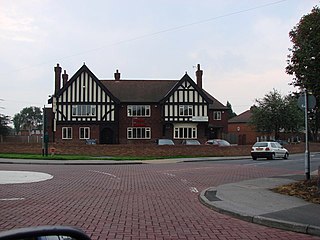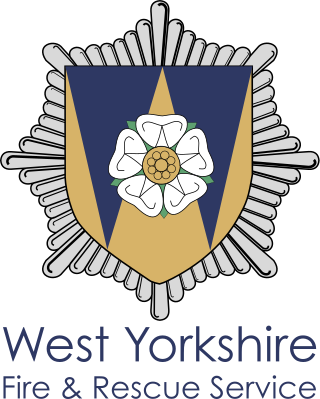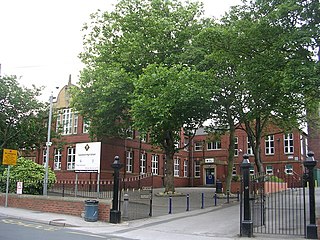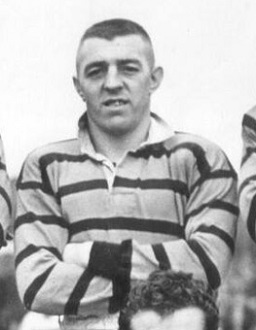
Imperial Chemical Industries (ICI) was a British chemical company. It was, for much of its history, the largest manufacturer in Britain. It was formed by the merger of four leading British chemical companies in 1926. Its headquarters were at Millbank in London. ICI was a constituent of the FT 30 and later the FTSE 100 indices.

Castleford is a town within the City of Wakefield district, West Yorkshire, England. It had a population of 45,106 at a 2021 population estimate. Historically in the West Riding of Yorkshire, to the north of the town centre the River Calder joins the River Aire and the Aire and Calder Navigation. It is located north east of Wakefield, north of Pontefract and south east of Leeds. Castleford is the largest town in the Wakefield district after Wakefield itself.

Pontefract is a historic market town in the Metropolitan Borough of Wakefield in West Yorkshire, England, east of Wakefield and south of Castleford. Historically part of the West Riding of Yorkshire, it is one of the towns in the City of Wakefield district and had a population of 30,881 at the 2011 Census. Pontefract's motto is Post mortem patris pro filio, Latin for "After the death of the father, support the son", a reference to the town's Royalist sympathies in the English Civil War. Small villages and settlements in the immediate area include Stapleton.

Wakefield, commonly known as the City of Wakefield, is a local government district with the status of a city and metropolitan borough in West Yorkshire, England. Wakefield, the largest settlement, is the administrative centre of the district. The population of the City of Wakefield at the 2011 Census was 325,837.

Ackworth is a village and civil parish in the metropolitan borough of Wakefield, West Yorkshire, England. It stands between Pontefract, Barnsley and Doncaster on the River Went. It has four parts: High Ackworth, Low Ackworth, Ackworth Moor Top, and Brackenhill. The 2001 census gave it a population of 6,493, which rose to 7,049 at the 2011 census. There is also a city ward called Ackworth, North Elmsall and Upton, with a 2011 census population of 16,099.

On May 4, 1988, a fire followed by several explosions occurred at the Pacific Engineering and Production Company of Nevada (PEPCON) chemical plant in Henderson, Nevada. The disaster caused two fatalities, 372 injuries, and an estimated $100 million of damage. A large portion of the Las Vegas Valley within a 10-mile (16 km) radius of the plant was affected, and several agencies activated disaster plans.

Castleford railway station serves the town of Castleford in West Yorkshire. It lies on the Hallam and Pontefract lines, 11 miles (18 km) south-east of Leeds.

Pontefract Monkhill railway station is the busiest station in the town of Pontefract, West Yorkshire, England. The station is on the Pontefract Line managed by Northern but is also served by Grand Central and is 14 miles (23 km) south east of Leeds.

Knottingley railway station serves the town of Knottingley in West Yorkshire, England. It lies on the Pontefract Line, operated by Northern, and is 16 miles (26 km) south east of Leeds railway station.

Upton is a village and civil parish in West Yorkshire, England. It had a population of 3,541 in the 2001 census.

The West Yorkshire Fire and Rescue Service (WYFRS) is the county-wide, statutory emergency fire and rescue service for the metropolitan county of West Yorkshire, England. It is administered by a joint authority of 22 people who are appointed annually from the five metropolitan boroughs of West Yorkshire, known as the Fire and Rescue Authority.

Castleford Academy is a secondary school in Castleford, West Yorkshire, England for children aged 11–18 located on Ferrybridge Road, just east of the town centre and next to Queen's Park.
The Clayton Aniline Company Ltd. was a British manufacturer of dyestuffs, founded in 1876 by Charles Dreyfus in Clayton, Manchester.

Wheldale Colliery was a coal mine located in Castleford, Yorkshire, England which produced coal for 117 years. It was accessed from Wheldon Road.

Keith Bridges, also known by the nickname of "Bridgie", was an English professional rugby league footballer who played in the 1950s and 1960s. He played at club level for Sharlston Rovers ARLFC, Wakefield Trinity, and Castleford, as a hooker, i.e. number 9, during the era of contested scrums.
The Allerton Bywater colliery explosion was a mining accident at the Allerton Bywater Colliery in Allerton Bywater, England, which occurred on Monday 10 March 1930, killing five miners and one pit pony.
The chemical industry in the United Kingdom is one of the UK's main manufacturing industries. At one time, the UK's chemical industry was a world leader. The industry has also been environmentally damaging, and includes radioactive nuclear industries.

Pontefract Hospital is an acute District General Hospital in Pontefract, West Yorkshire operated by the Mid Yorkshire Teaching NHS Trust. The hospital primarily serves the towns of Pontefract and the five towns.

The Old Mining Museum building is a heritage-listed former chemical laboratory and mining museum and now commercial building located at 36–64 George Street in the inner city Sydney suburb of The Rocks in the City of Sydney local government area of New South Wales, Australia. It was designed by Walter Liberty Vernon and built from 1902 to 1909. It is also known as Mining Museum (former), Earth Exchange and Sydney Geological and Mining Museum. The property is owned by Property NSW, an agency of the Government of New South Wales. It was added to the New South Wales State Heritage Register on 10 May 2002.
The Prince of Wales Colliery was a coal mine that operated for over 130 years in Pontefract, West Yorkshire, England. It was permanently closed in 2002 after geological problems were found to make accessing remaining coal reserves unprofitable, and most of the site was later converted for housing.




















